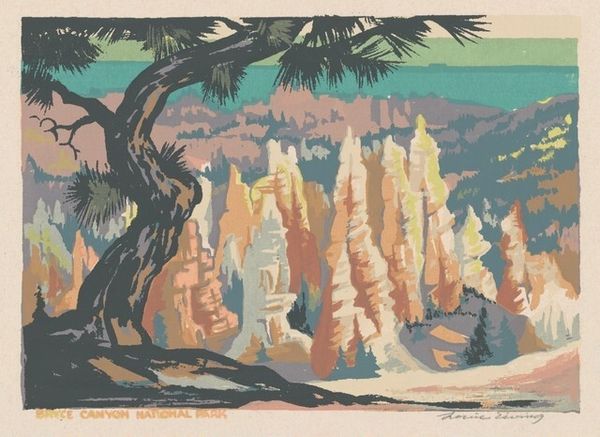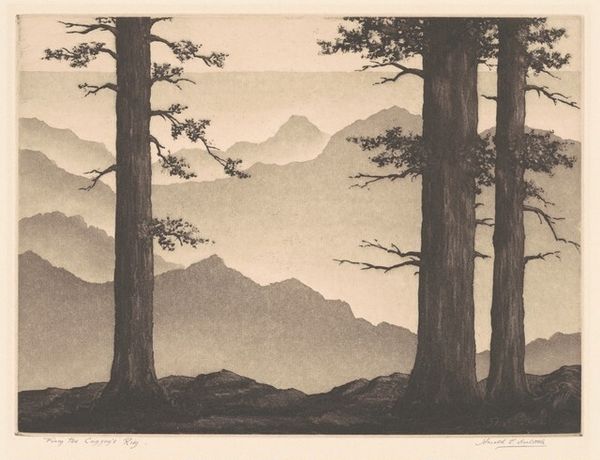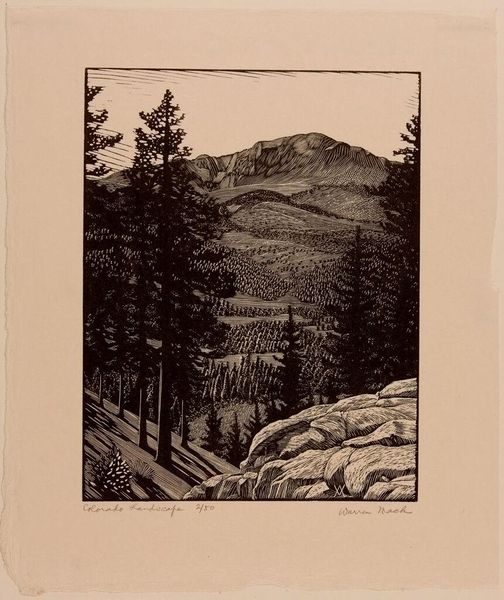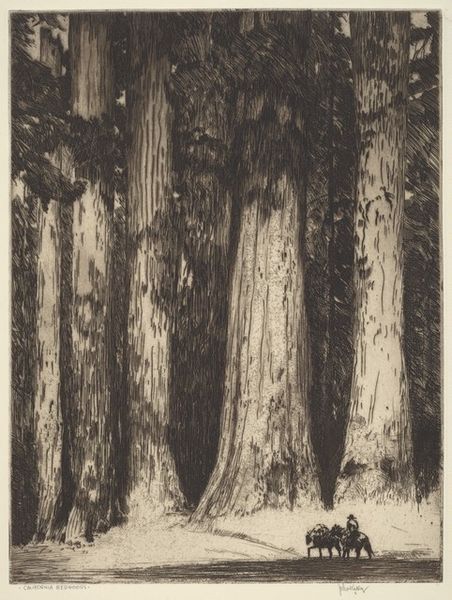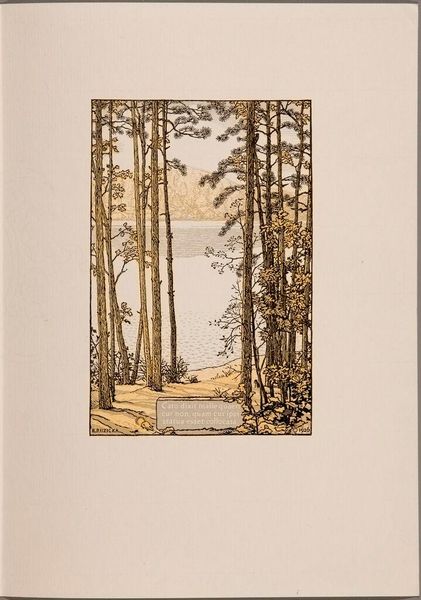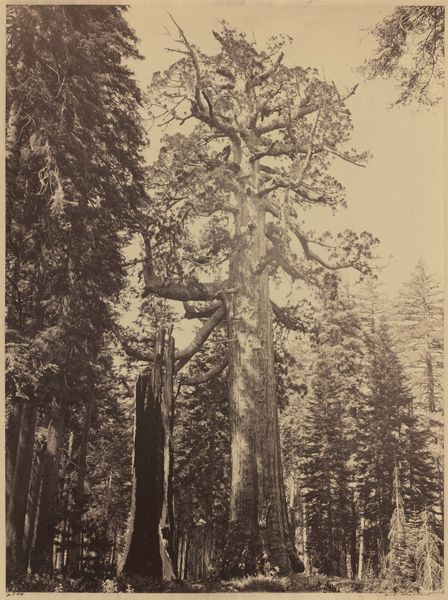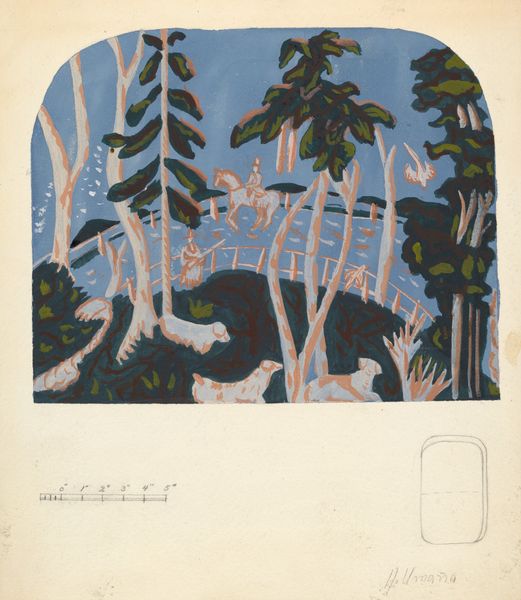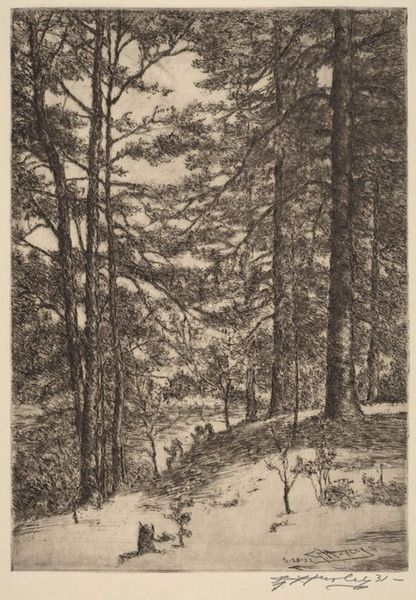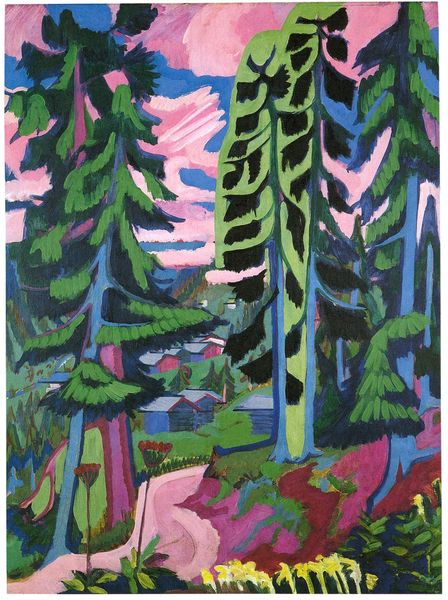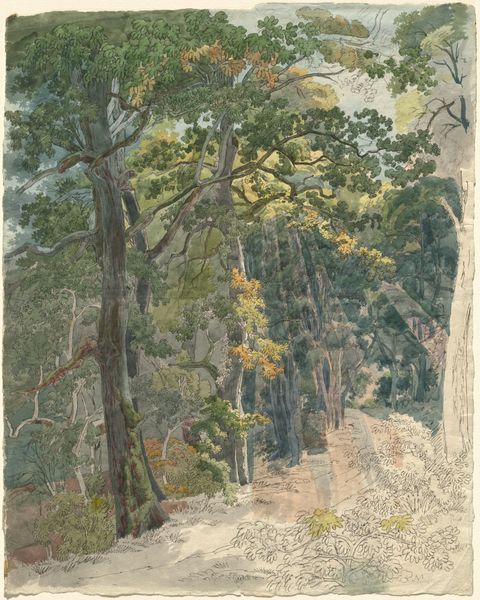
# print
#
landscape
Dimensions: 14 3/8 × 9 1/2 in. (36.51 × 24.13 cm) (image)23 × 19 × 1 1/2 in. (58.42 × 48.26 × 3.81 cm) (outer frame)
Copyright: No Copyright - United States
Curator: Hasui Kawase's 1930 woodblock print, "The Nikko Road," presents us with a seemingly simple yet subtly complex vista. What’s your immediate response to its visual presence? Editor: Serenity, above all. The texture implied by the woodblock seems almost tactile; the entire scene emanates a sense of quiet labour and communion with nature. The material evokes a very peaceful, spiritual tone. Curator: Precisely. Note the use of contrasting dark verticals against the sunlit path. The tall, imposing trees serve as a framing device, guiding the viewer’s eye along the road. Do you observe how that spatial arrangement structures your perception? Editor: Absolutely. And, considering the labor-intensive process of Ukiyo-e prints—the carving, the registration, the multiple impressions required for each color—we begin to appreciate not only the landscape depicted but also the hands that painstakingly brought it into being. One also imagines the craftsman's calloused hands holding that tiny baren tool. Curator: A keen observation. Also, think of the inherent flatness imposed by the medium. There is a flattening of perspective that underscores the image's stylized, symbolic character, rather than purely mimicking reality. That technique, I'd argue, points us to a complex conversation between representation and expression. Editor: Interesting point. In that context, how much does the labor process inform this style? After all, consider how decisions regarding the specific colors—likely dependent on dye availability or expense at that time—impact our reading of the work now. Is our modern reading possibly a projection? Curator: Perhaps a productive one. But also understand that Kawase skillfully leverages color to direct the composition. He also seems very deliberate in organizing tonal relationships in ways that produce a delicate spatial recession. Editor: Well, on my end, seeing the traces of the process interwoven into the artwork reinforces that beauty—the dedication and materiality imbue the artwork with meaning that purely mimetic landscape renderings cannot capture. Curator: It's a captivating synergy. I suppose it is an open invitation for many interpretations that stem both from design and tangible practice. Editor: Agreed. A journey down "The Nikko Road" is therefore also a journey into understanding how art’s meaning evolves alongside the processes that shaped it.
Comments
No comments
Be the first to comment and join the conversation on the ultimate creative platform.

